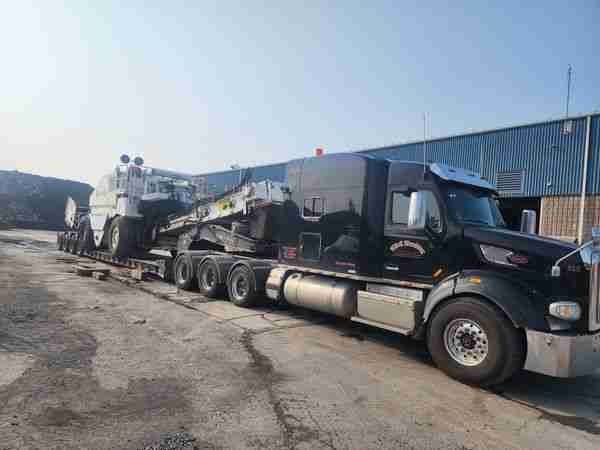
Transport regulations play a crucial role in ensuring the safety, efficiency and fairness of the movement of goods and people. For companies involved in transportation, complying with these regulations is essential to avoid legal problems, fines and operational disruptions. Here’s an overview of key transport rules and practical advice on how to navigate and comply with them effectively.
1. Understand key transport rules
- Federal Motor Carrier Safety Administration (FMCSA) regulations. The FMCSA sets regulations for commercial vehicles operating in the United States. Key areas include:
- Hours of Service (HOS): Rules governing the maximum number of hours drivers can operate and required rest periods. This regulation aims to prevent driver fatigue and improve road safety.
- Vehicle maintenance: Requirements for periodic vehicle inspections, maintenance and repairs to ensure vehicles are in safe operating condition.
- Driver Qualifications: Driving license rules, including medical examinations and background checks to ensure drivers meet safety and competency requirements.
- Environmental Regulations Regulations aimed at reducing the environmental impact of transport include:
- Issue rules: Rules established by the Environmental Protection Agency (EPA) that limit the amount of pollutants that can be emitted by vehicles. These standards vary by vehicle type and may require the use of cleaner fuels or technologies.
- Fuel efficiency standards: Requirements to improve fuel economy, which may affect vehicle selection and operating practices.
- Customs and Border Protection (CBP) Regulations. For companies involved in international shipping, compliance with CBP regulations is critical:
- Import and export compliance: Compliance with the rules related to the documentation, classification and valuation of goods that cross international borders. This includes proper customs declarations and payment of duties and taxes.
- Commercial agreements: Understand and apply provisions of trade agreements that may affect tariffs and import/export restrictions.
- Regulations on hazardous materials Companies that handle or transport hazardous materials must comply with:
- Department of Transportation (DOT) regulations: Rules governing the safe transportation of hazardous materials, including proper labeling, packaging, and documentation.
- Emergency Response Requirements: Protocols for responding to hazardous material spills or accidents, including training and emergency contact information.
2. Practical tips to keep up to date
- Periodically review regulatory updates Carriage rules may change frequently. To stay informed:
- Subscribe for updates: Sign up for newsletters or alerts from relevant regulatory agencies, such as the FMCSA, EPA, or DOT. These sources provide timely information on new regulations and changes.
- Join industry associations: Participate in industry groups and associations that provide information on regulatory changes and best practices.
- Implement compliance management systems Establishing robust compliance management systems can streamline compliance:
- Develop policies and procedures: Create detailed policies and procedures that describe how your company will comply with the regulations. Make sure they are reviewed and updated regularly.
- Invest in technology: Use compliance management software to track regulatory requirements, manage documentation, and monitor adherence. Technology can help automate compliance processes and reduce the risk of errors.
- Train your team Education and training are essential to ensure that all employees understand and comply with transportation regulations:
- Carry out periodic training: Provide ongoing training to drivers, logistics staff and administrative staff on regulatory requirements and compliance procedures.
- Keep records: Maintain detailed records of training sessions, certifications and compliance activities. This can be useful for audits and inspections.
- Conduct internal audits and reviews Regular internal audits can help identify and address potential compliance issues before they become major issues:
- Perform self-inspections: Periodically review your operations to ensure they align with regulatory requirements. This includes checking vehicle maintenance records, driver records and shipping documentation.
- Hire external auditors: Consider hiring outside auditors to conduct comprehensive compliance reviews and provide objective assessments of your practices.
- Consult with legal and compliance experts Navigating complex regulations can be challenging. Seeking professional advice can provide valuable support:
- Legal advisor: Consult with legal experts specializing in transportation law to ensure your business is fully compliant with all applicable regulations.
- Compliance Consultants: Work with compliance consultants who can provide personalized guidance and help implement best practices to meet regulatory requirements.
Navigating transportation regulations requires diligence, awareness and proactive management. By understanding key regulations, staying informed about updates, and implementing effective compliance strategies, companies can avoid legal trouble, ensure smooth operations, and maintain a good reputation in the industry.
Whether it’s FMCSA regulations, environmental standards, customs regulations or hazardous materials requirements, a comprehensive approach to compliance is essential. Investing in training, technology and expert advice will not only help meet regulatory demands, but also contribute to the overall efficiency and success of your transportation operations.
Contact us today for Free shipping estimates and heavy truck information. We welcome any questions, concerns or comments you may have.
CONTACT US TODAY


Comments are closed.

